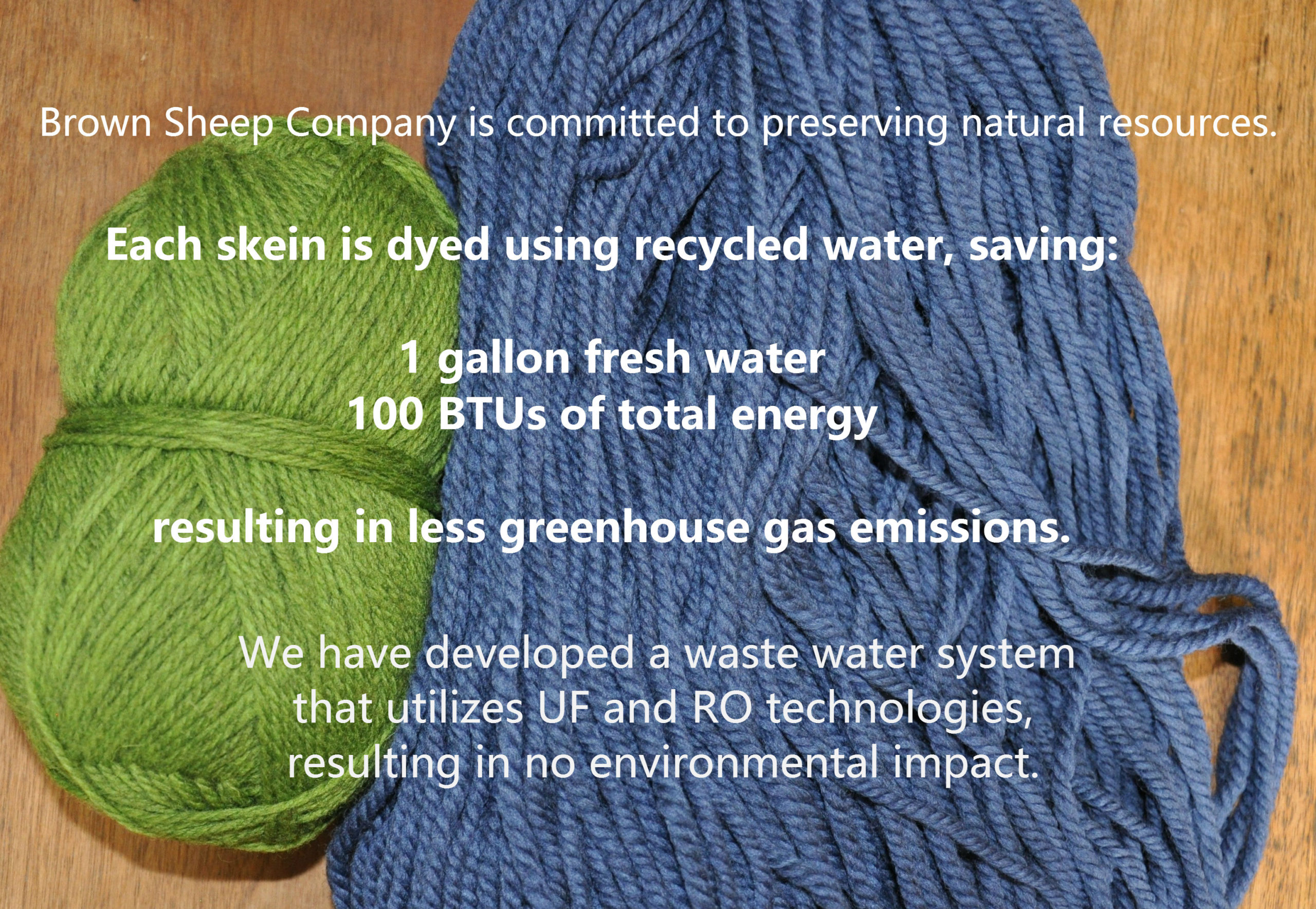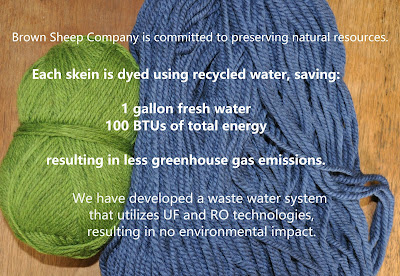How We Recycle Our Dye Water

For Earth Day, I wanted to share some information about our environmentally-friendly system for treating waste water.
The system was implemented by Robert Wells, company VP, who used skills from his first career as a research scientist in radiation biology to develop a unique method for water treatment.
Since we currently dye about 600-800 pounds of yarn per day, and each pound of yarn requires 10 gallons of water for the dyeing process, water is extremely valuable. Our location in a semi-arid climate surrounded by crop fields makes water especially valuable.
| One of 4 dye vats in the mill |
Our current system for recycling waste water was implemented in 2009. At that time, there were no existing models for recycling dye water, and Robert had to “start from scratch” determining which kinds of technology could meet the needs of the mill.
After going through the dye vat, waste water is highly acidic and has high salinity, as well as containing some leftover dye products that aren’t taken up by the wool. The water is sent through an Ultra Filtration (UF) system, then goes through Reverse Osmosis (RO) to remove all solid matter from the water. After another round of UF, clean water is returned to the dye vats to be re-used. So, instead of consuming fresh water for each round of dyeing, the same water can be used over and over again.
Any waste matter removed from the water is pumped into a completely sealed lagoon. This lagoon allows moisture to evaporate slowly. Naturally occurring bacteria degrade the dye matter, and eventually after 10-15 years the solid particles remaining (mostly carbon) will be disposed of.
| The lagoon is equipped with evaporators that are programmed to shut off automatically if there is too much wind. |
Most importantly, this system results in no environmental impact because the concentrated acid, salts, and particles necessary for the dye process will never harm the air, water, or soil.
The water treatment system requires constant monitoring and maintenance, and we continue to look for new technology that could make it even more efficient.



Pingback: Our Yarn Dyeing Process: Solid Colors - Brown Sheep Company, Inc.